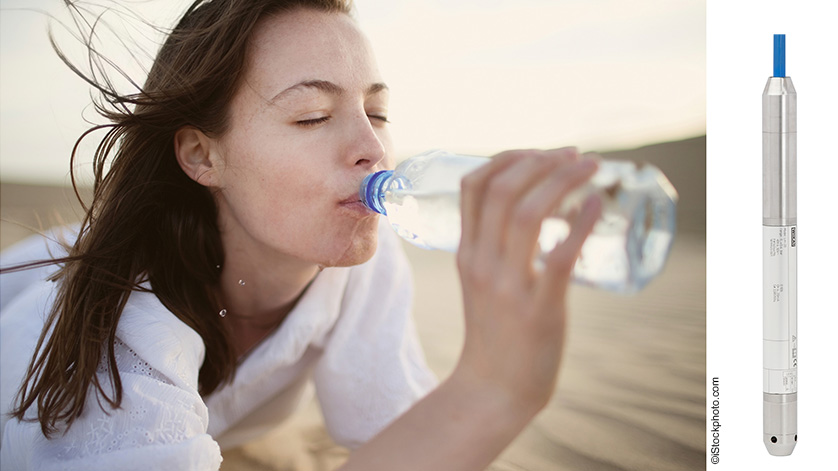
Pressure sensors are needed in a variety of applications around the production and distribution of drinking water. As soon as a pressure sensor comes into contact with drinking water, one wonders, as a user, whether this is allowed. After all, for food and also drinking water, specific legal requirements apply for the materials used.
In Germany, frequently the KTW approval (“Kunststoffe im Trinkwasser” – plastic in drinking water) is required, in France on the other hand, it is the ACS approval (“Attestation de conformité sanitaire” – sanitary compliance certificate). Both approvals have in common that they assess the migration behaviour, i.e. the emission of substances into drinking water, with regard to the legal limits. Thus, through various test conditions and also over a time period of several months, compliance with the maximum limit values is proven.
Drinking-water compliant pressure sensors
For using pressure sensors in drinking water applications, the metallic pressure connection is not usually critical. With WIKA sensors, this is manufactured from stainless steel, which requires no approval in accordance with ACS and KTW. However, the pressure connection must be sealed, which is generally achieved through a non-metallic O-ring seal or flat gasket. These do require an approval in accordance with KTW in Germany and ACS in France – reciprocal recognition of approvals is, unfortunately, not possible.
The use of standard pressure sensors in conjunction with a KTW approved seal is thus quite simple. The situation is different when the pressure sensor itself comes into contact with the drinking water. This is unavoidable with hydrostatic level measurement using submersible pressure transmitters. Therefore, in Germany, submersible pressure transmitters for use in drinking water applications require an approval in accordance with KTW.
Note
If you have any questions, your contact will gladly help you.

